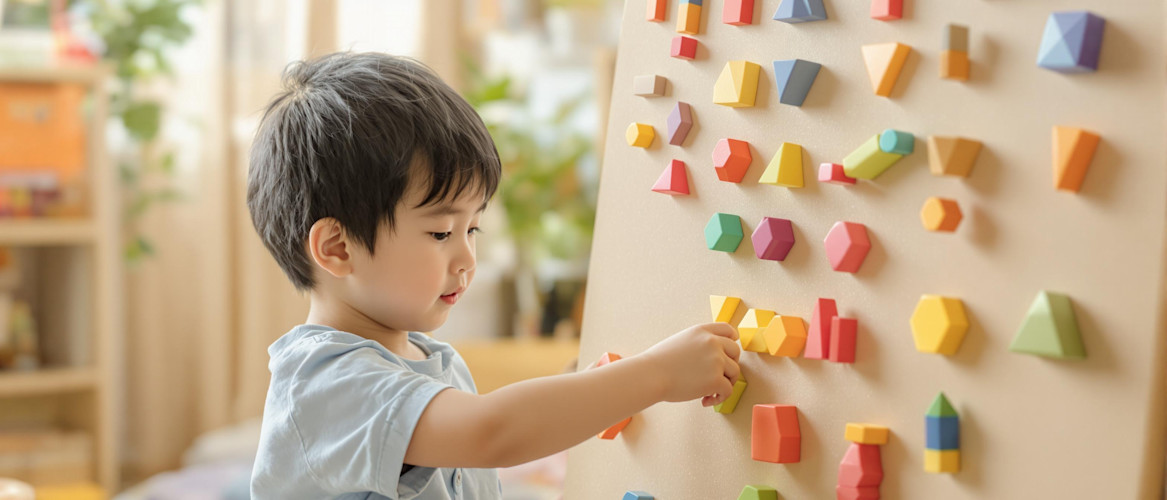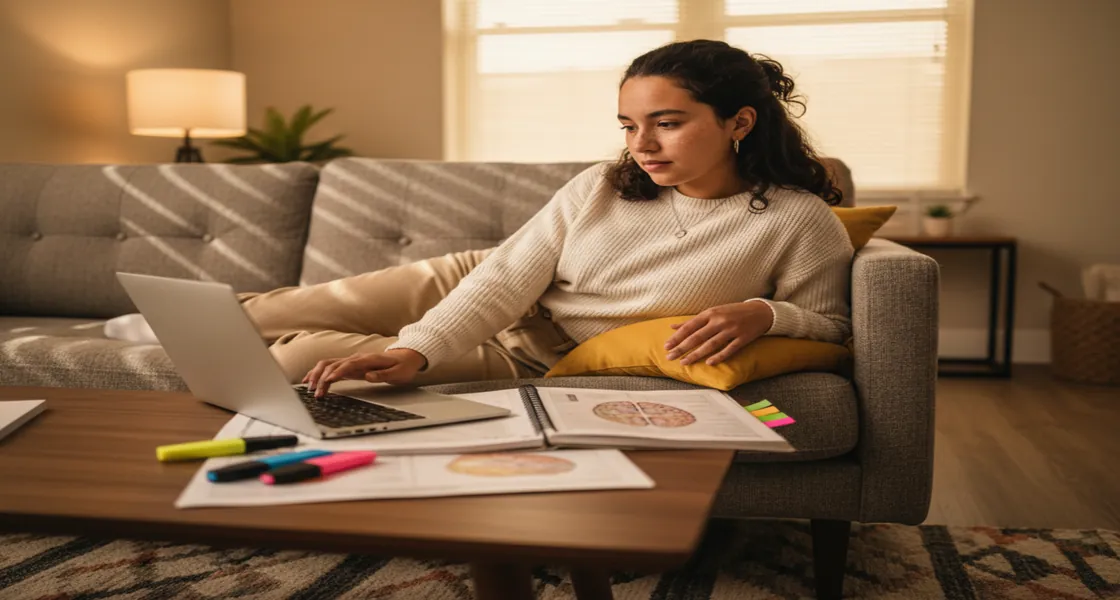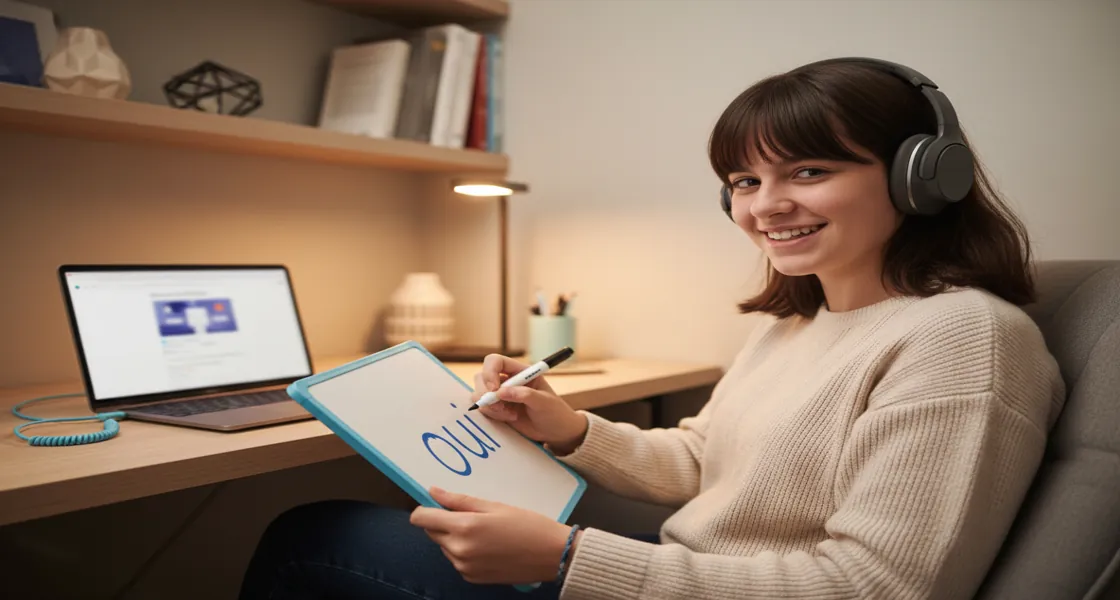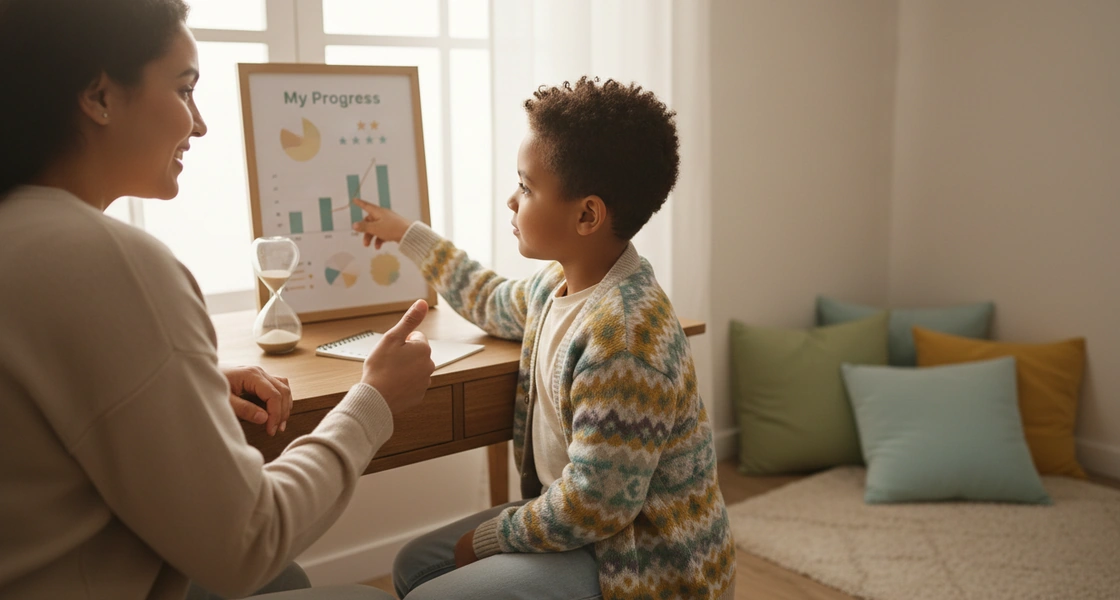Your learner has a sharp eye for the world around them. They notice how buildings stretch toward the sky, how playground slides curve and twist, and how puzzle pieces lock together just right. Geometry gives them the words, tools, and models to explore the shapes and patterns they've already been spotting, making the familiar feel even more exciting.
Instead of diving straight into lists of names and formulas, we can build on their knowledge through playful exploration, creative thinking, and everyday conversation. It's a way to deepen their understanding by following their natural curiosity, not sidelining it.
In this guide, you'll find flexible, easy-to-use ideas for weaving geometry into daily life — from hands-on projects to simple moments of wonder you can share. And if you want to keep that spark going, Outschool's live, small-group classes offer even more ways for learners to grow their skills through discovery and play.
Foundational ideas that make geometry click
Geometry is really just the way we talk about shapes, spaces, and how things fit and move together. It's in how buildings rise, rivers curve, and tiles form patterns under our feet.
For young learners, it starts long before they hear big words like angles or vertices. It starts when they spot how a playground slide bends, how windows line up across a wall, or how two puzzle pieces snap together just right.
Early ideas like noticing, comparing, and describing shapes give them the tools to make sense of the spaces around them. The more chances they have to explore these ideas through play, movement, and simple conversations, the more naturally their understanding grows, setting them up for bigger leaps later.
Here's where you can start:
Recognizing and naming shapes
At first, your learner will probably spot familiar 2D shapes like circles, triangles, squares, and rectangles. Before long, they'll start noticing 3D shapes, too — like spheres, cubes, cones, and cylinders popping up in the world around them.
You can help them make these connections by weaving shape talk into everyday moments. A traffic sign becomes a triangle. A soccer ball turns into a sphere. Little observations make shape names feel useful and real, not just something from a textbook.
Many learners also love sorting or grouping shapes based on what they notice, like which ones have straight sides, curved ones, or how different shapes can fit together. Often, these early comparisons show up naturally during play, long before they're part of any formal lesson.
Exploring attributes: sides, corners, edges, and faces
Noticing a shape's features, like its number of sides, corners, edges, or faces, helps your learner describe and compare what they see more clearly.
This kind of understanding usually grows best through hands-on play and visual aids. Tracing a rectangle to feel its four sides, stacking blocks into a cube, folding paper to find edges — these experiences make ideas about shapes feel real and memorable.
Simple, open-ended questions can spark deeper noticing, too:
- "How many corners does your block have?"
- "Can you find a shape with no straight edges?"
When you ask questions like these, aim to spark curiosity instead of quizzing for the right answer. It's all about helping your learner look a little closer and make discoveries on their own.
Using spatial words and directions
Spatial language gives learners the words they need to describe how shapes and objects connect and relate to each other. Terms like above, below, next to, inside, and between help make sense of spaces — and lay the groundwork for future skills like geometry, map reading, and even storytelling.
You can weave these words into your day just by talking as you go:
- "Can you put the red block next to the blue one?"
- "Let's find the piece that fits inside the square."
Hearing and using spatial words during play helps your learner pick them up naturally without feeling like a formal lesson.
Explore geometry through play and hands-on discovery
Once your learner starts spotting shapes and spaces around them, it's a great time to dive into some hands-on exploration.
A walk around the neighborhood, a block-building session, or a quick art project at the kitchen table can become simple, engaging ways to build geometry skills — just by playing, noticing, and creating together.
You can start with whatever’s on hand. From stacking cups to folding paper, ordinary routines are full of opportunities to build, stretch, flip, and imagine shapes in motion. For learners who enjoy more structure, simple tools, and digital playgrounds can open up even more ways to explore and create.
Here are some easy, fun ways to jump in:
Go on a shape hunt
A simple way to connect shapes to the real world is to look for them together. You can go around the house, head outside, or scan the kitchen for hidden geometry. Street signs, windows, leaves, playground equipment — shapes are tucked everywhere once you start paying attention.
Adding a few playful twists can make the hunt even more fun:
- Find something rounder than your head.
- Spot the tallest triangle.
- Look for a shape without any straight sides.
Shape hunts keep noticing light, playful, and full of little discoveries that stick.
Build and create with blocks or LEGO
If your learner loves stacking and building, they're already halfway to exploring geometry.
Construction toys like blocks, magnetic tiles, or LEGO bricks are a great way to experiment with shapes and structures.
You can keep the play going by suggesting ideas like:
- Build a tower using only rectangles.
- Spot all the shapes hidden in your spaceship design.
There's no right or wrong way to do it — just lots of experimenting, balancing, and creative problem-solving.
Make art from shapes
Art projects open a playful doorway into geometry, allowing learners to explore shapes creatively.
They might cut out paper shapes, design creatures made entirely from triangles and circles, or piece together colorful mosaics.
You can spark ideas by inviting them to try:
- Create a picture using only squares and triangles.
- Build a pattern that repeats across the page.
- Color in the square or circle on this page
Working with shapes visually helps build recognition, creativity, and patterning skills — all while keeping the experience light, fun, and pressure-free.
Use your body to build shapes
One of the most memorable ways to explore shapes is to become them.
Invite your learner (and maybe jump in yourself) to stretch, bend, and move their bodies into different shapes:
- Stretch your arms wide to form a straight line.
- Curl up tight to create a circle.
- Link arms or legs with someone else to build a triangle or a square.
It's playful, active, and helps learners connect shapes to motion, space, and their own sense of movement.
Spot geometry in buildings and design
Look up at a building's windows. Check out a bridge's arches. Notice the way floor tiles form repeating patterns. Talking about shapes you see around town — rectangles in windows, triangles in rooftops, circles in clock faces — helps your learner connect geometry to how things are built and organized.
Encourage them to notice patterns and structures:
- How different shapes are stacked together to form buildings and signs.
- Which shapes make a building feel stronger, taller, or more stable?
Simple observations like these turn a regular walk or drive into an easy way to spot geometry in action.
Find patterns and symmetry in nature
Nature is one of the best places to discover geometry in action. From the matching wings of a butterfly to the spirals tucked inside a seashell, the natural world is full of shapes, patterns, and designs waiting to be noticed.
You might spot symmetry in a leaf, a sunflower's spiraling seeds, or the layered structure of a pinecone. Even how trees branch out or petals unfold follows patterns that connect to early geometry ideas.
You can build on these discoveries with simple activities, like collecting natural objects to sort by shape or symmetry, sketching what they find, or creating art inspired by patterns they notice outside.
Resources to keep the momentum going
Every learner clicks with different experiences. Some love building and creating; others light up when they spot patterns hidden in stories, pictures, or puzzles.
There's no right way to grow geometry skills — it's all about finding what feels exciting and natural for your learner.
Here's a mix of ideas to keep the fun going:
More ways to bring shapes to life
If your learner loves stories or pictures, books are an easy, cozy way to sneak in a little shape spotting — without it ever feeling like a lesson.
- The Greedy Triangle by Marilyn Burns — A playful story about a triangle that explores life as all kinds of different shapes.
- Shapes, Shapes, Shapes by Tana Hoban — A wordless picture book that invites learners to find real-world shapes hidden all around them.
- Captain Invincible and the Space Shapes by Stuart J. Murphy — A fun adventure that brings 3D shapes into the world of storytelling.
Games and hands-on materials
If your learner prefers building, stacking, or rearranging things, hands-on materials can turn geometry into something they can hold, move, and create with.
- Pattern Blocks and Boards — Perfect for making colorful designs and spotting symmetry
- Tangram Puzzles — Great for flipping, rotating, and fitting pieces together to make new shapes and pictures.
- Geoboards — A playful way to stretch rubber bands into shapes and compare sizes, angles, and sides.
Interactive digital tools
Digital tools offer even more ways to experiment for learners who enjoy screen time.
Structured programs that weave in geometry
Sometimes, a bit more structure can help, especially if you want something ready to go without much planning.
Outschool live classes and clubs
If your learner loves working alongside others or thrives with a little extra guidance, Outschool's live classes and clubs offer even more ways to explore.
Common questions about teaching Geometry
It’s easy to wonder how much to explain, when to jump in, or what to do if your learner doesn’t seem into shapes yet. These quick answers are here to take out the guesswork and help you feel more comfortable supporting their curiosity as it grows.
What if my learner isn’t really into shapes right now?
That’s totally fine. Some learners jump in right away, and others take their time. You don’t have to push it — just stay curious together. Maybe point out a cool pattern on the sidewalk or ask what shape their snack looks like. Small, low-pressure moments like that can go a long way.
Should I correct them if they call a hexagon a triangle?
Not immediately. Mistakes are part of figuring things out. Instead of jumping in with the correct answer, you might ask something like, “How many sides do you see?” or “What does it remind you of?” Giving them space to notice and rethink things helps them learn to trust their own thinking.
I’m not super confident with math. Can I still help?
You don’t need to know all the answers — just be willing to explore alongside them. Talk about what you notice, ask questions together, or even say, “I’m not sure — let’s figure it out.” That kind of back-and-forth is often more helpful than having a “right” explanation ready to go.
Is it okay if we keep doing the same activities over and over?
Yes. If your learner keeps coming back to the same blocks, puzzles, or drawings, that’s a sign they’re finding something interesting in them. You don’t need to switch things up all the time — repeated play often leads to deeper noticing and new discoveries.
When do we start formal geometry lessons?
There’s no set timeline. Many of the most important ideas — like noticing patterns or describing shapes — grow naturally through play and conversation. When your learner’s ready for more structure, it’ll usually appear in their questions or curiosity. Until then, keep things simple and engaging.
Helping your learner grow their geometric thinking
As your learner plays, builds, folds, and sketches, they do more than make shapes—they build a way of thinking.
Geometry helps them start asking new questions: How do things fit together? What makes something strong or balanced? How can pieces move or change and still stay connected?
Over time, this kind of thinking shapes how they approach problems, spot patterns, and see possibilities—not just in math but also in art, design, science, and storytelling.
When your learner is ready to dive even deeper, Outschool's small-group classes offer playful ways to explore — puzzling, building, and creating alongside other learners.


.svg)
.svg)







